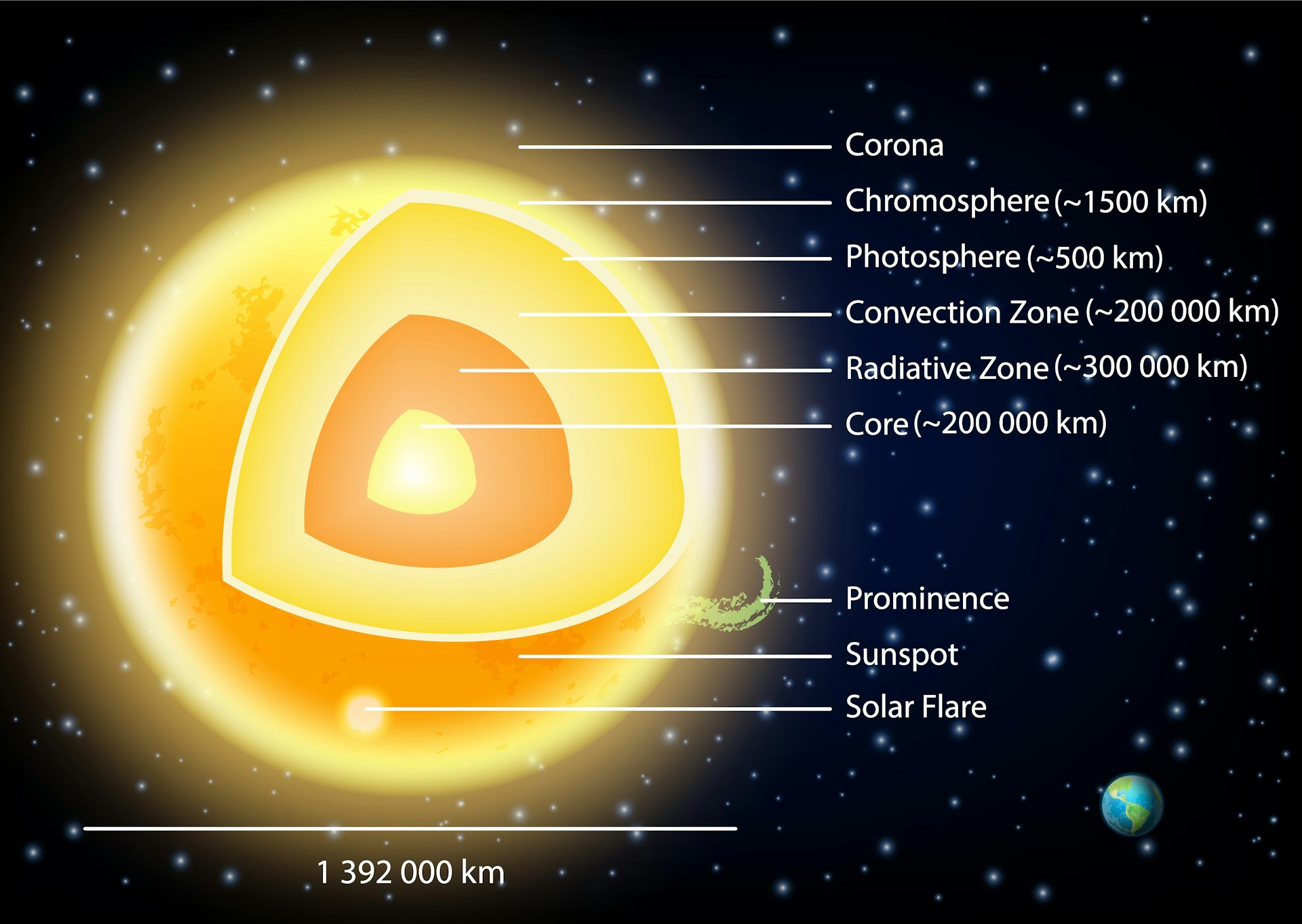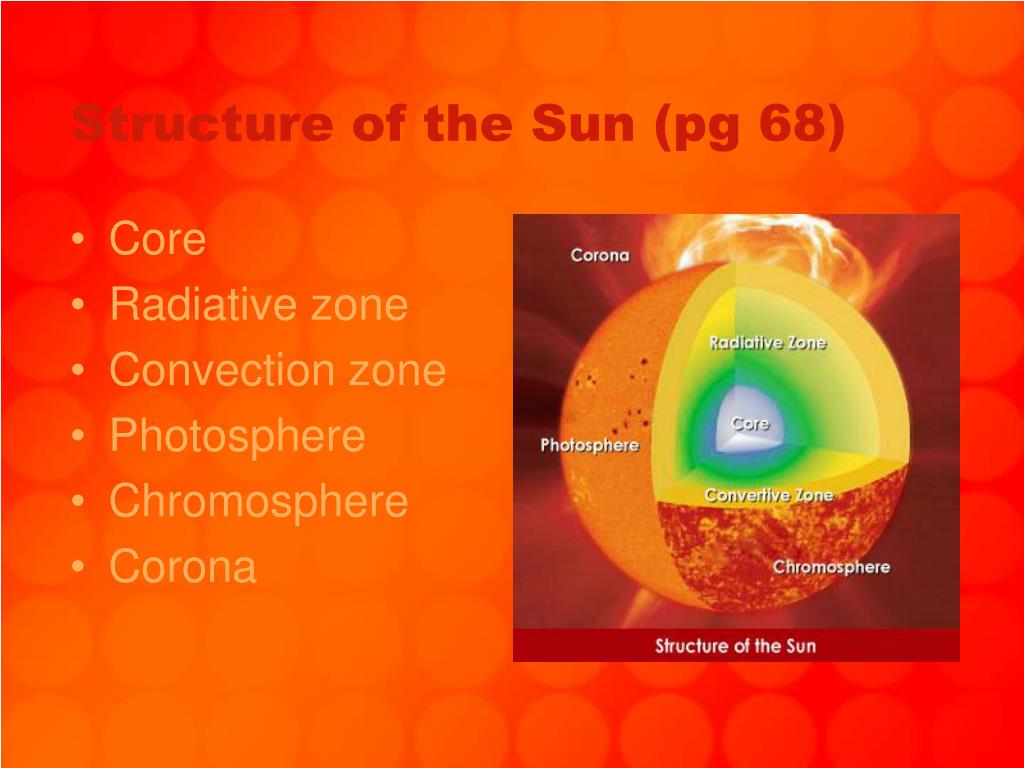
Some particles are pulled back towards the Sun while others are so energised that they flow outwards from the corona at high speeds to form the Solar Wind. High velocity solar particles interact with the magnetic field of the Sun. The corona stretches millions of kilometres from the chromosphere and temperatures may reach 2,000,000°K. The Corona does not generate heat as such the high velocity of particles within it is the result of the temperature thought to be due to magnetic fields. It can also be seen using special equipment called a coronagraph. It then appears as a 'halo' surrounding the Sun. We can observe it best during a solar eclipse when the Moon blocks out the photosphere and chromosphere of the Sun. We construct a one-dimensional simple modelfor the physical structure of the stars chromosphere,chromosphere-corona transition region, and corona using non. It consists of gases that are expelled from the Sun. The corona is the outmost part of the Sun's atmosphere. The chromosphere can only be very briefly observed at the time of a solar eclipse and then only at the beginning and end of one when observers can detect a thin pink rim around the Sun. The chromosphere extends for thousands of kilometres above the photosphere, although is relatively thin when we consider the size of the Sun. These are circular areas with a thin darker area around them. Photosphere The photosphere is typically regarded as the surface of our Sun. Features of the photosphere include a process called granulation. Average temperatures are approximately 5,800°K. This is the surface layer of the Sun that we are able to see.

Light and heat move through these regions of the Sun, temperatures range from 2,000,000°K to 6,000°K.

Temperatures reach over 15,000,000°K at the core where the Sun produces its energy.

The eruptions lead to solar activity, which includes such phenomena as sunspots, flares, prominences, and coronal mass ejections.Structure 10.2 - Know the location and relative temperatures of the Sun’s internal divisions, including:ġ0.3 - Understand the role of the Sun’s internal divisions in terms of energy production and transferġ0.5 - Know the location, temperature and relative density of components of the solar atmosphere, including: The sun's magnetic fields rise through the convection zone and erupt through the photosphere into the chromosphere and corona. and the corona (the Sun's outer atmosphere.).īeyond the corona is the solar wind, which is actually an outward flow of coronal gas.a transition region (a thin and very irregular layer of the Sun's atmosphere that separates the hot corona from the much cooler chromosphere), The corona sends solar wind made of plasma out in all directions, traveling beyond the boundaries of our solar system.the chromosphere (an irregular layer above the photosphere where the temperature rises from 6000☌ to about 20,000☌),.While the chromosphere resides above the photosphere, and, in turn, the corona envelopes. the photosphere (the visible surface of the Sun), The photosphere is typically regarded as the surface of our Sun.But a few thousand kilometers above it a small distance when we consider the. and the convection zone (the outer-most layer of the solar interior extending from a depth of about 200,000 km to the visible surface where its motion is seen as granules and supergranules. The visible surface of the sun, or the photosphere, is around 6,000 degrees Celsius (11,000 degrees Fahrenheit).the radiative zone (extends outward from the outer edge of the core to base of the convection zone, characterized by the method of energy transport - radiation),.These reactions release the energy that ultimately leaves the surface as visible light. the core (the central region where nuclear reactions consume hydrogen to form helium.

From the inside out, the solar interior consists of: The sun and its atmosphere consist of several zones or layers.


 0 kommentar(er)
0 kommentar(er)
